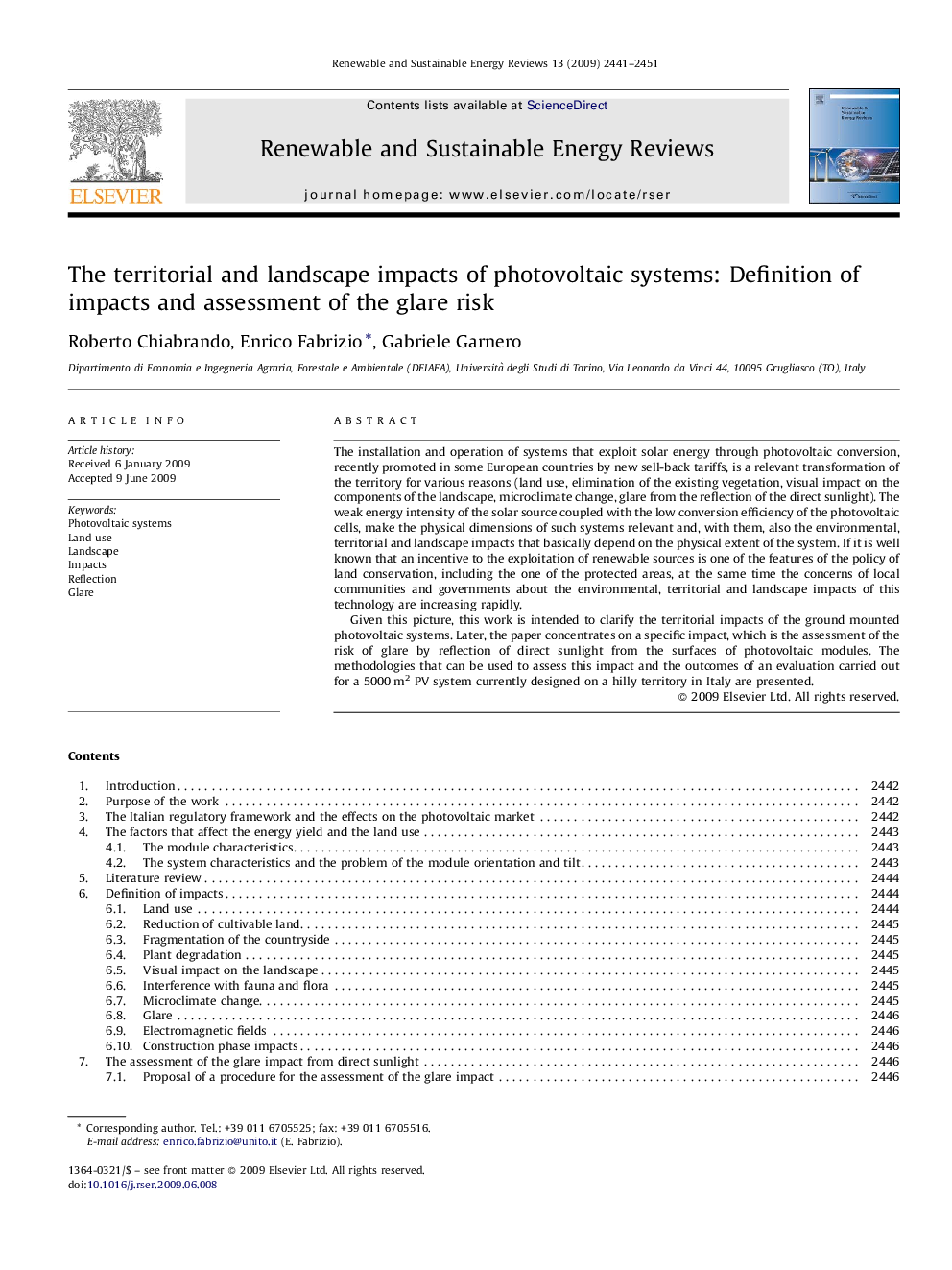| Article ID | Journal | Published Year | Pages | File Type |
|---|---|---|---|---|
| 1752055 | Renewable and Sustainable Energy Reviews | 2009 | 11 Pages |
The installation and operation of systems that exploit solar energy through photovoltaic conversion, recently promoted in some European countries by new sell-back tariffs, is a relevant transformation of the territory for various reasons (land use, elimination of the existing vegetation, visual impact on the components of the landscape, microclimate change, glare from the reflection of the direct sunlight). The weak energy intensity of the solar source coupled with the low conversion efficiency of the photovoltaic cells, make the physical dimensions of such systems relevant and, with them, also the environmental, territorial and landscape impacts that basically depend on the physical extent of the system. If it is well known that an incentive to the exploitation of renewable sources is one of the features of the policy of land conservation, including the one of the protected areas, at the same time the concerns of local communities and governments about the environmental, territorial and landscape impacts of this technology are increasing rapidly.Given this picture, this work is intended to clarify the territorial impacts of the ground mounted photovoltaic systems. Later, the paper concentrates on a specific impact, which is the assessment of the risk of glare by reflection of direct sunlight from the surfaces of photovoltaic modules. The methodologies that can be used to assess this impact and the outcomes of an evaluation carried out for a 5000 m2 PV system currently designed on a hilly territory in Italy are presented.
